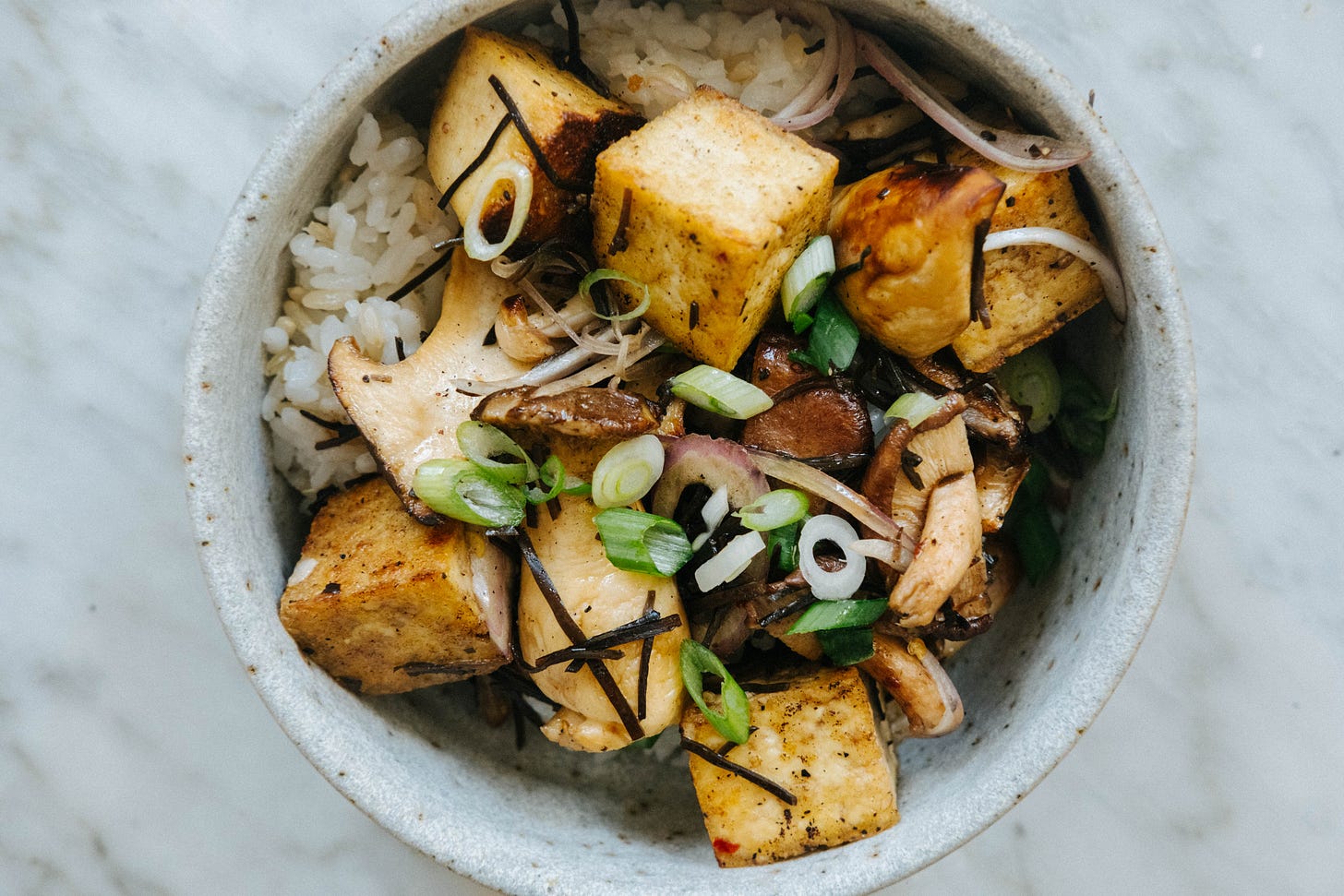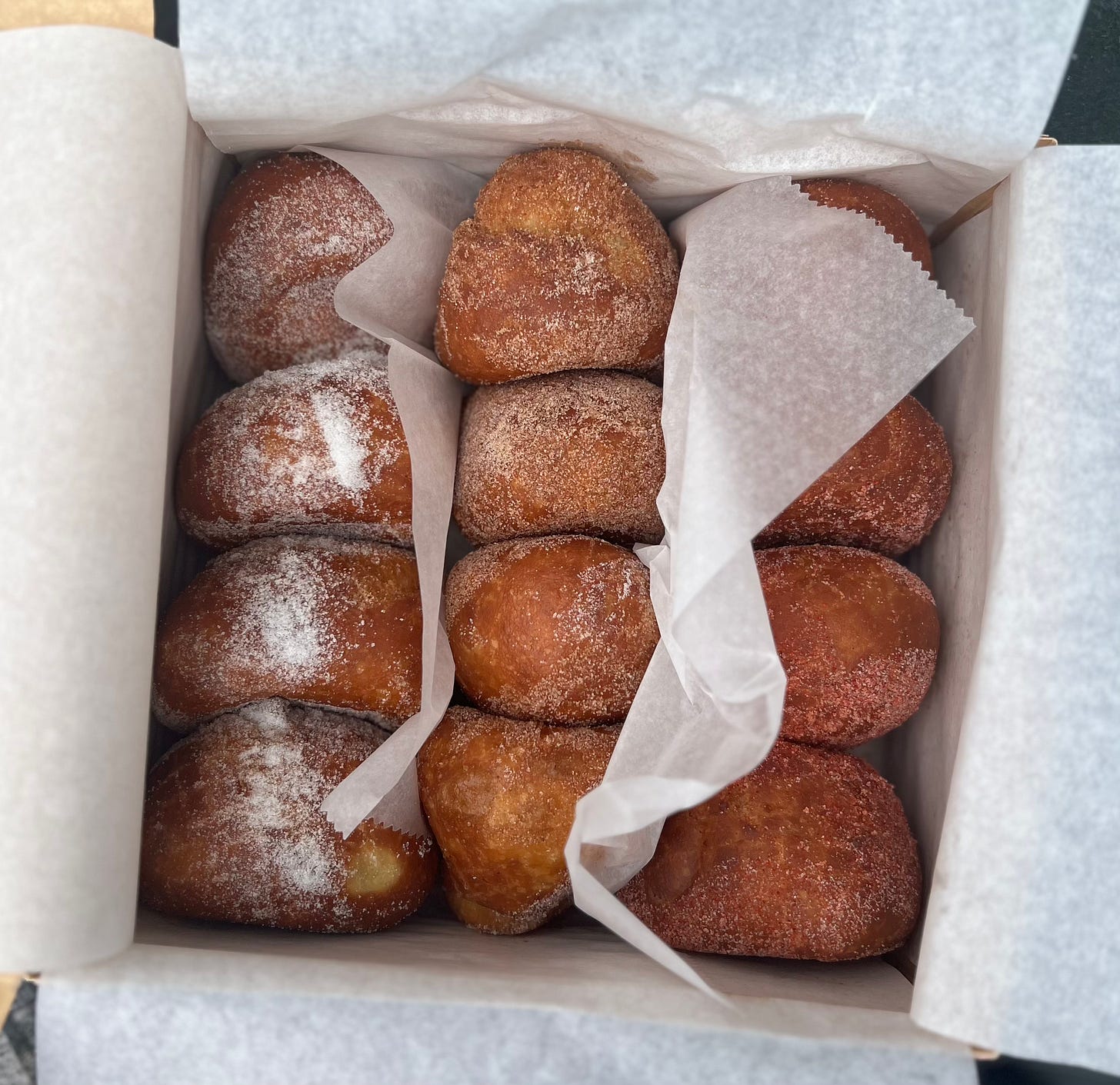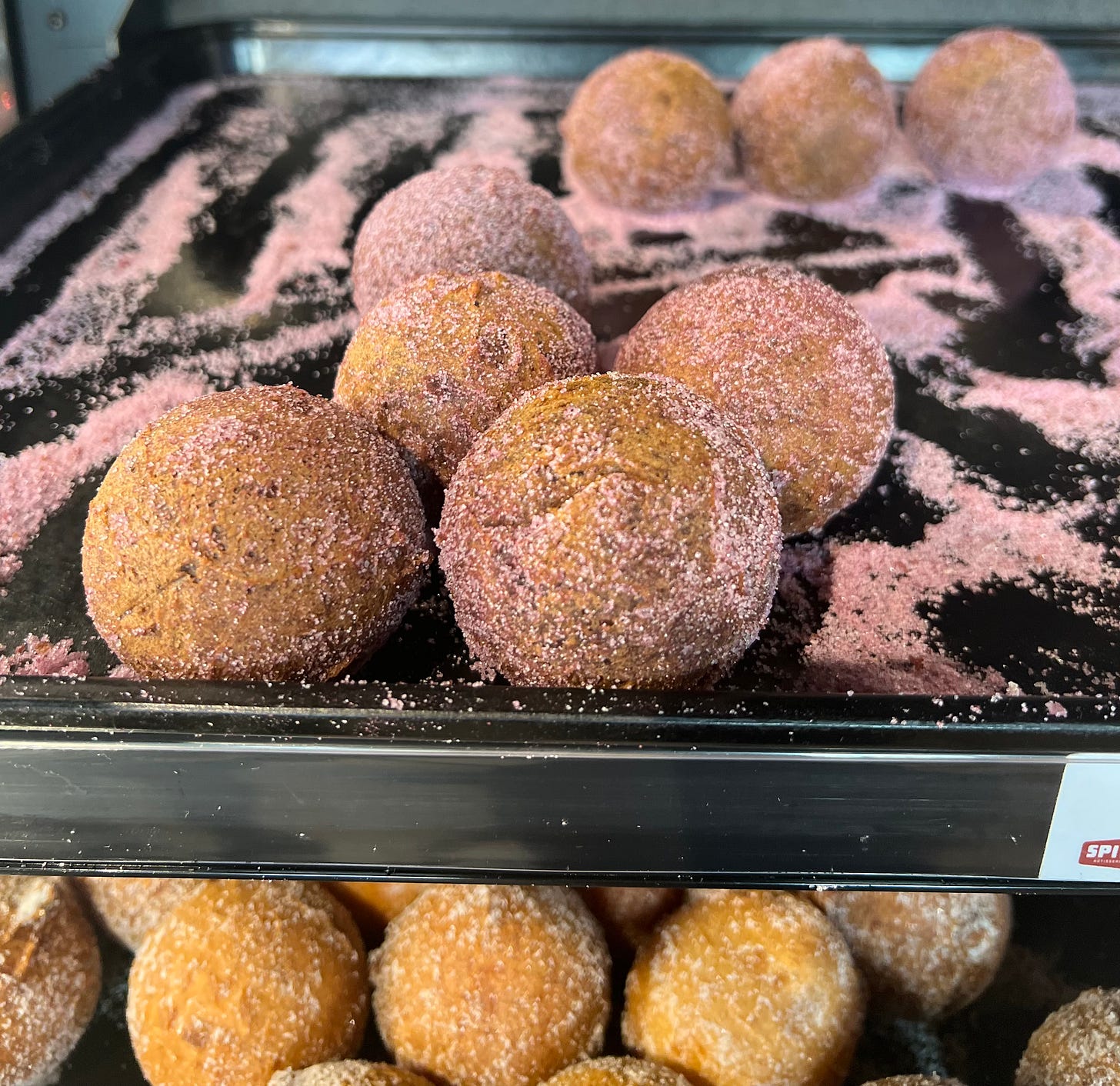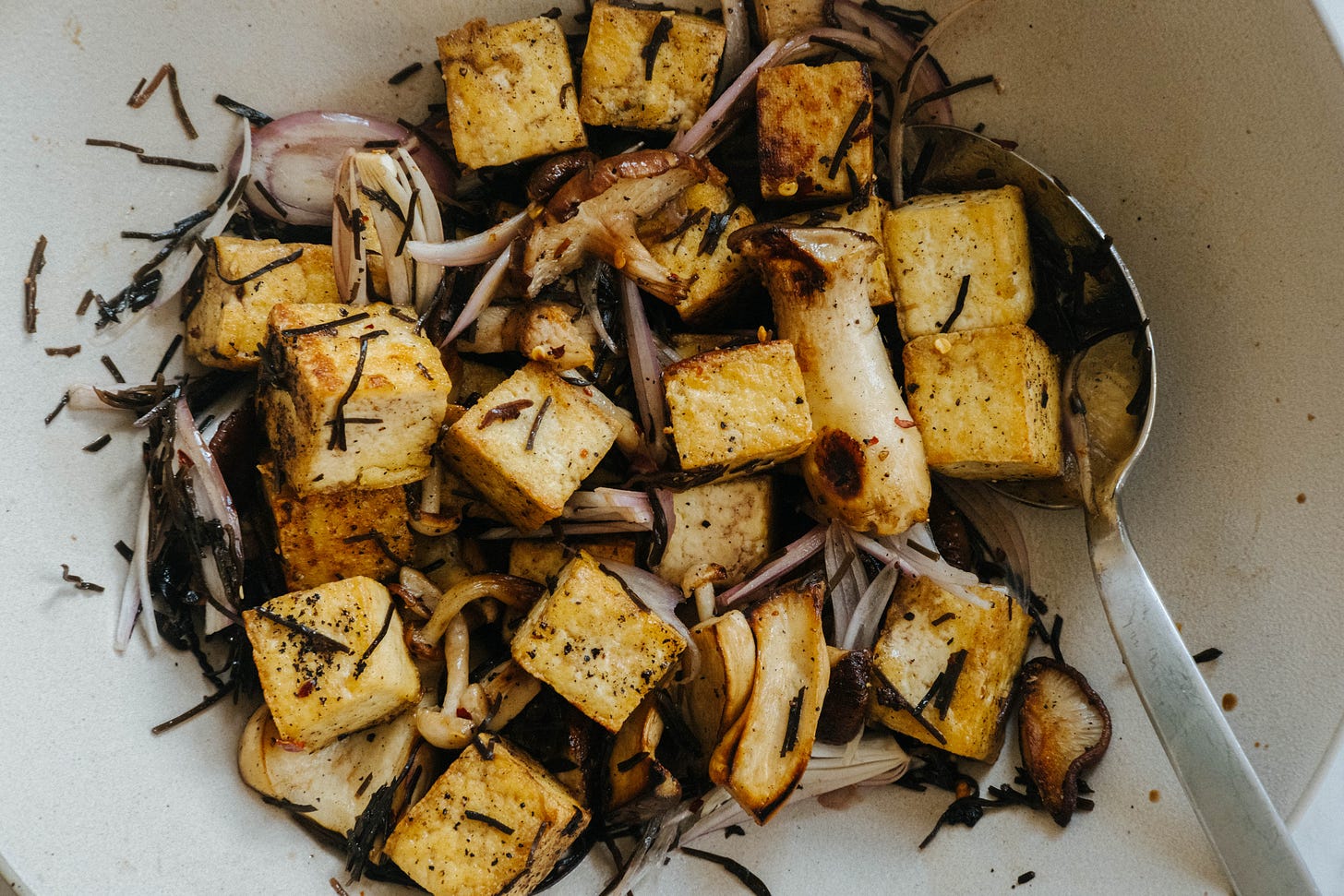Welcome to To Vegetables, With Love, a celebration of a vegetable life, less ordinary.
My book Tenderheart is available from Books are Magic, Kitchen, Arts and Letters, Book Larder, Bold Fork Books and also here or here.
We traveled to O'ahu for Christmas, a week of sunshine but really a reunion to see my mum, who traveled from Sydney to celebrate her imminent milestone birthday with us. I had long wished to visit Hawaii, a place where my mum almost settled more than half a century ago before deciding on Australia as her adopted home. Over the years, many of my Asian friends have relocated to Hawaii, telling me it is the one place in America where they don’t feel like the minority. I can now really understand their viewpoint, because Hawaii is a true melting pot of Asian culture - from the long, rich and troubled history with their Japanese population, to Chinese, Korean, Filipino, and Vietnamese influences. I felt incredibly fulfilled and humbled by the experience of being there and amongst these diverse influences.
A lot has been said about how great the food is in Hawaii and O'ahu did not disappoint. The food was stunning - fresh, exciting, familiar-yet-different. My family loved the fish and I particularly loved trying all the malasadas (Portuguese donuts) that I could find. Leonards is famous for their malasadas and I particularly loved their li hing mui dusting which is made of a Chinese sweet and salty pickled plum that is very popular flavouring in Hawaii. But my favourite malasada were unexpectedly a mochi variation which I found by accident from Duke’s Lane marketplace which was close to our hotel. The small fried balls come in ube and mango flavours, with the perfect chewy consistency.
I had never eaten poke until last week. Well not a real poke. In most places outside of Hawaii, the dish is represented in a bowl, rice topped with marinated fish, and a mélange of colourful vegetable toppings. In Hawaii, poke is more refined, elegant in its simplicity. A lot of the time, it is just fresh, raw fish marinated in a shoyu (Japanese soy sauce) and sesame oil.
In my friend Alana Kysar’s book Aloha Kitchen, she explains that poke literally means to ‘section’ or ‘to slice or cut’, an apt description of the cubed fish. Foodland, a major Hawaiian supermarket chain, has a legendary poke counter selling a huge and diverse range. When we visited, every single person ahead of us ordered California roll poke, so my husband did the same. Their dish of ‘ahi tuna, crab, and cucumbers marinated in a sriracha mayonnaise was reported as delicious. I tried Foodland’s tofu poke, a simple, umami dish of pan-fried tofu tossed with seaweed and marinated in shoyu and sesame oil. It was savoury and refreshing and I ate it greedily from the container. On my final day, I tried the tofu poke at Doraku Sushi in Waikiki, which was very different - cubes of local pressed tofu (which was very soft), served with avocado, red onions, tossed in an in-house sauce that was creamy and tart.
As is often the case with travel inspiration, I arrived home ready to create my own poke. I wanted to stay quite true to the simple, unfettered flavours of Foodland’s poke. My recipe is umami forward, with a good hit of seaweed - I used arame, which is native to Japan, and comes in thin, wavy fronds, but you could substitute with any seaweed - hijiki, wakame and dulse would all work. If you don’t enjoy seaweed, or don’t have it, you can omit it. If you have furikake, you can sprinkle some on top before eating. Other ways to customize this recipe include adding some grated ginger, or topping with sesame seeds. Alana adds some chopped macadamia nuts to her shoyu ‘ahi poke and you could do that here too.
THIS WEEK’S RECIPE
Tofu and mushroom poke
© Hetty Lui McKinnon for To Vegetables, With Love
Eat this poke with a bowl of rice, top with avocado and edamame beans if you have them. Or use the mixture to make tacos - my daughter ordered ‘ahi poke tacos, served in a crispy corn shell, for her Christmas Day lunch and she loved them. Or why not serve it with a poached, jammy or fried egg for a simple breakfast?
Serves 2-4 as a main
handful arame or other seaweed, about 4g
extra virgin olive oil
450g (1 pound) extra firm tofu, cut into cubes
salt and black/white pepper
150g (5 ounces) mixed mushrooms such as fresh shiitake, trumpet, oyster, beech or cremini/swiss browns, thickly sliced
1 shallot/eschalot, finely sliced
1 tablespoon sesame oil
1 tablespoon shoyu, tamari, or soy sauce
2 scallions, finely sliced
Optional
White rice, to serve
Soak the seaweed in room temperature water for 5 minutes. Drain and then roughly chop.
Heat a large skillet on medium high. Drizzle with olive oil and add the tofu cubes, season with salt and pepper and drizzle the tops of the tofu with a bit more oil. Cook the tofu until lightly golden, about 2-3 minutes, and then flip and cook the other sides until golden all over. Transfer the tofu to a large bowl.
To the same skillet on medium high heat, add another drizzle of oil and then the mushrooms. Season with salt and pepper and cook, tossing often, until golden, 4-5 minutes. Transfer to the same bowl as the tofu.
To the tofu and mushrooms, add the seaweed, shallot, sesame oil and shoyu, tamari or soy sauce. Toss to combine and them allow to sit for 10 minutes.
When ready to eat, top with scallions. This tofu poke can be eaten as is, or served with rice.
If you’re looking for a newsletter recipe, see my Substack recipe archive here. For recipes with a 🔒 symbol, you will need a paid subscription. Everything else is free.
🥦 My cookbook, Tenderheart is for cooking vegetables, all year round. Pick up your copy here. It is also mostly vegan (or vegan-izable) and gluten-free adaptable.








Just made this. It’s great. Would make again. Would be great with a fried egg on top.
Planning this for Thursday (weekly cooking with kid) dinner! To go with crispy rice patties topped with raw ahi, for the fish eaters.